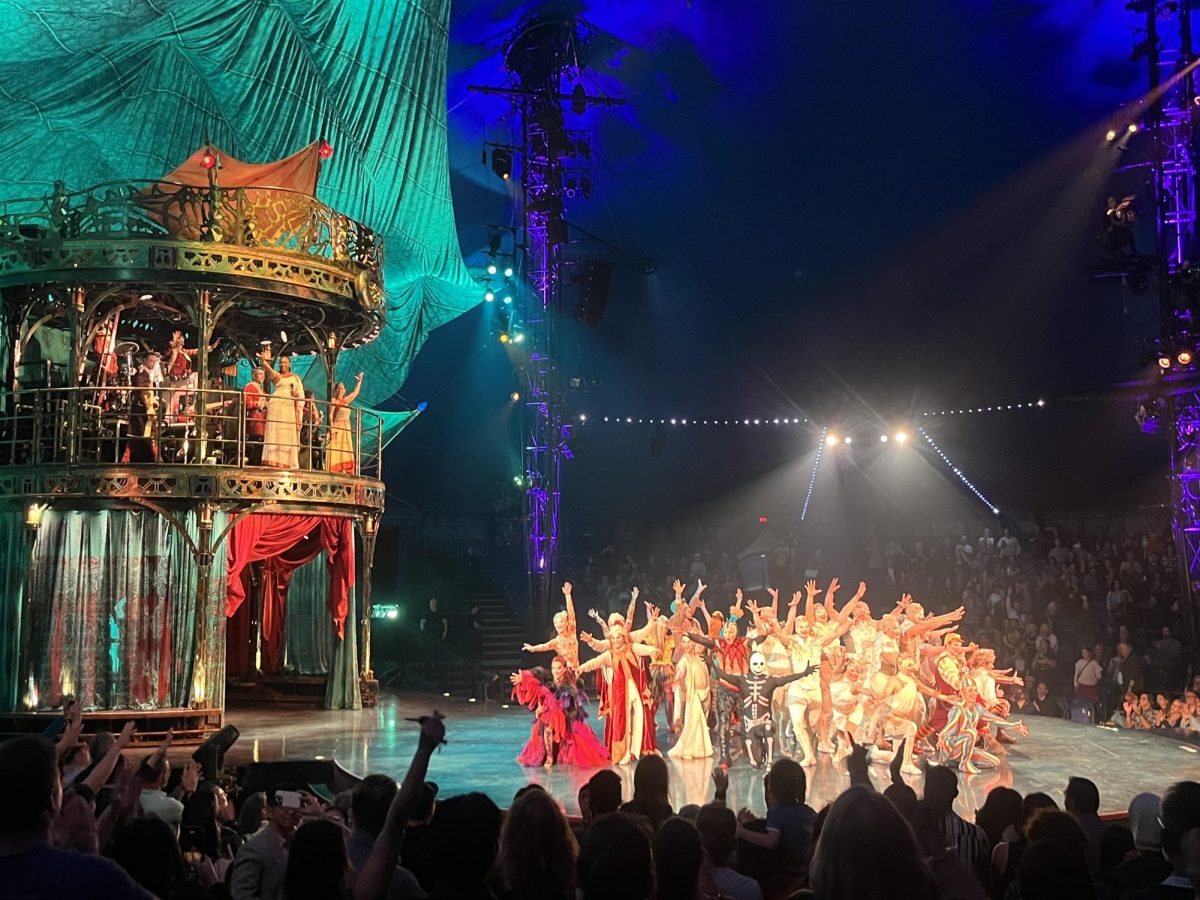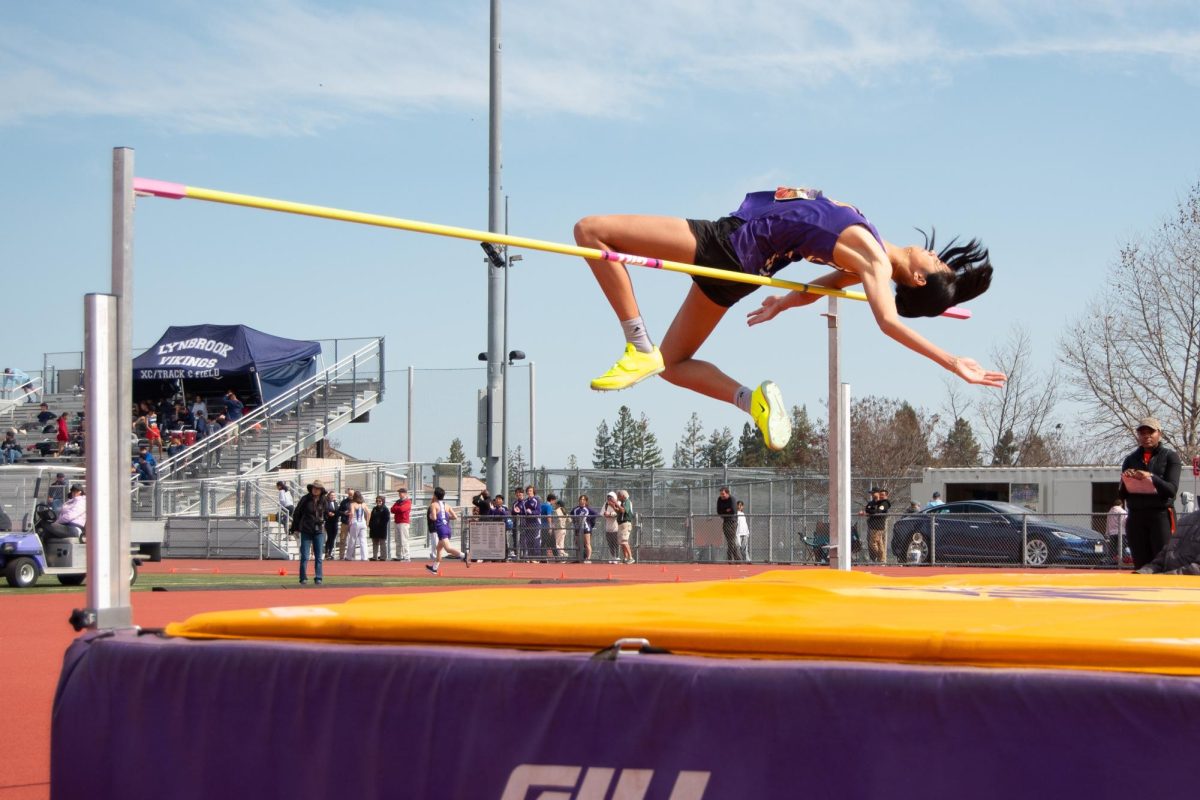Through a series of nail-biting stunts, grand musical elements and visually appealing lighting effects under a large dome-like tent, world-renowned production company Cirque du Soleil opened “Cirque du Soleil: Kooza” on Thursday, April 18. The 125-minute show held its debut at Santa Clara County Fairgrounds in San Jose, running from April 18 to May 26 before moving to Laguna Hills, California, then Portland, Oregon. Cirque du Soleil, based in Las Vegas, has had over 23 tours nationwide, “Kooza” being the most recent.
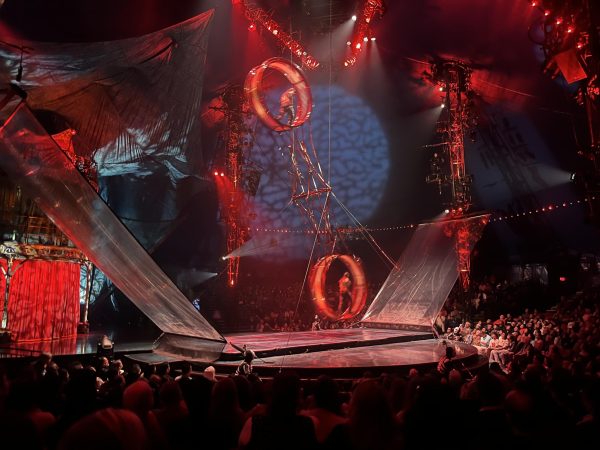
The show opens with a young, innocent boy who receives a mysterious package — the package unveils a clown, setting in motion a two-hour journey as the clown and the protagonist journey through a new exotic world, meeting new characters with remarkable abilities, including the king of the world and his hooligan sidekicks.
From the very start of the show, as the boy flies his kite across the stage, backed by playful melodies, the audience knows they are in for a treat. However, the show doesn’t reveal its true grandeur until shortly after, when the clown unfolds two large pieces of cloth against neon green flashing lights to reveal a large moving set piece with the live band and vocalists. From there, the show takes the audience on a roller-coaster of stunts, laughs and imagination.
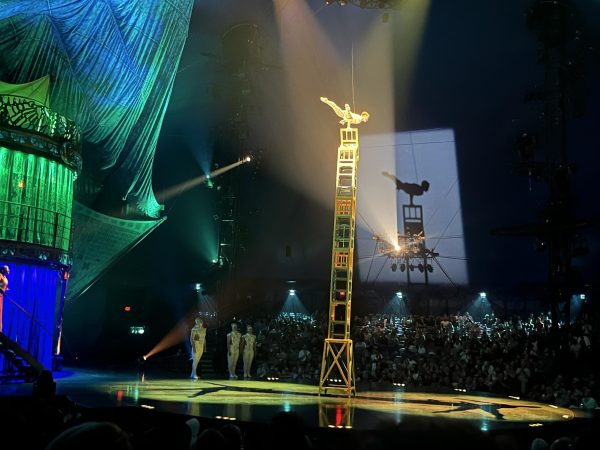
The stunts in “Kooza” are its magnum opus, each crafted near perfectly to make the audience gasp and cheer. “Cirque du Soleil: Kooza” portrays a diverse cast, each with unique performance abilities that mesh well with the various themes of the show. In the more solemn and thoughtful parts of the show, especially in the first half, contortionists perform center stage, performing and balancing on one another. One of the larger acts of the show is “silk,” in which a performer hangs off of a large red cloth hanging from the ceiling and soars across the audience, smoothly and intricately traveling up and down the cloth.
The second half of the show steps up the energy drastically, opening with the Wheel of Death, a large contraption of two large rotating wheels suspended in mid-air. Two daunting actors brave these wheels, performing tricks in and on top of the wheels as they spin fast. Later, the actors set up the double highwire, in which four performers dance and interact with one another across two thin ropes — 15 and 25 feet long, respectively — in the air. The actors are able to carefully place two bicycles on top of the highwire. Once they are situated, they continue to balance a chair on a rod between them that conveniently seats another actor. Moments like these, along with many other acts, involve a tower of stacked chairs, see-saws, hula hoops and more, leaving viewers at the edge of their seats.
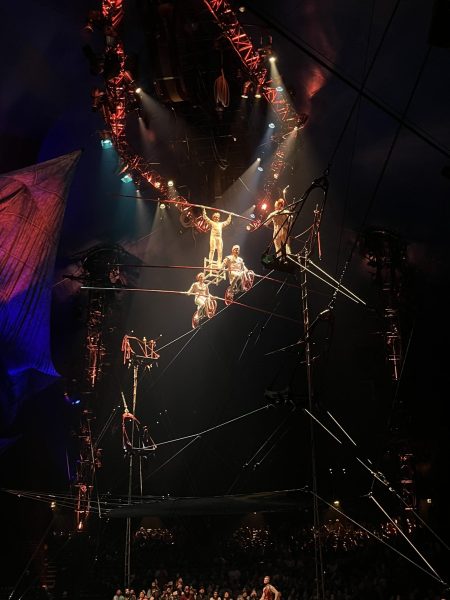
The show’s production doesn’t solely rely on just its stunts — the characters of the clown and the boy create a unique and almost unsettling dynamic on stage through the tension they build off of each other, and the king and his sidekicks land every joke in their skits.
The show utilizes a lot of audience interaction, which plays well with the theme of the show — in both the show’s prelude and transitions, the cast dances across the seating area and playfully interacts with the audience. One of the most memorable moments in the show is when the king and his sidekicks pick an audience member to help them steal a crown, with the cluelessness of the audience member adding to the comedic effect of the scene.
However, one aspect where the show falters is through its placement of dance sequences. While the choreography plays well with the themes of the show, it is often simplistic and sometimes boring, paling in comparison to the breathtaking circus acts.
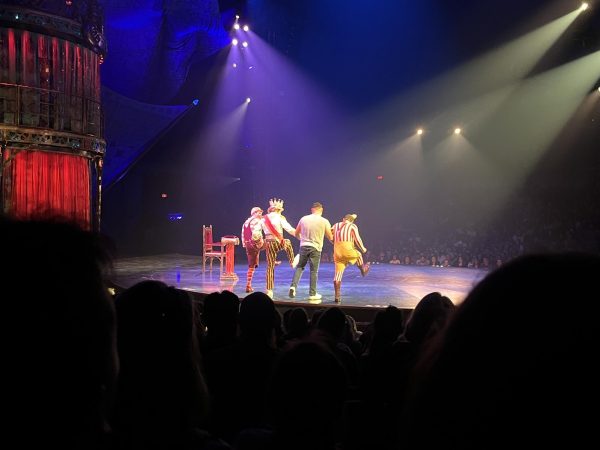
Despite this, the show is a technical marvel, almost on par with a full-scale theatre production. Near the beginning of the show, the clown hands a wand to the boy, which he uses to illuminate the entire stage. The entire tent is rigged with lights, and once the light flows up the four large pillars that are holding up the tent and goes across the stage, the lighting plays an essential role in the show. Whether it be by using spotlights to highlight various actors in their respective scenes or overall enriching the technical scale of the show, the lighting both literally and figuratively illuminates the show. While the lighting is sometimes off, with a spotlight being in the wrong place or a light sometimes not turning on despite the actor’s cue, it’s nothing that detracts from the overall experience.
The music in “Kooza” is also commendable, with [a band] performing live rather than using pre-recorded tracks. All of the instrumentals enrich the show, with both the lead vocalists and drummer shining and showing their skills powerfully.
“Cirque du Soleil: Kooza” conveys themes of fear and identity through the stories of the clown as he also finds his own footing through his experiences with the show’s protagonist, but most importantly, through the immense vision that the show creates, it tells a story of the power and joys of imagination, ebbing and flowing creativity through and through. Even with minor flaws, the production has no boring moments, adding another feather in the cap of Cirque du Soleil’s impressive repertoire.
4.5/5



